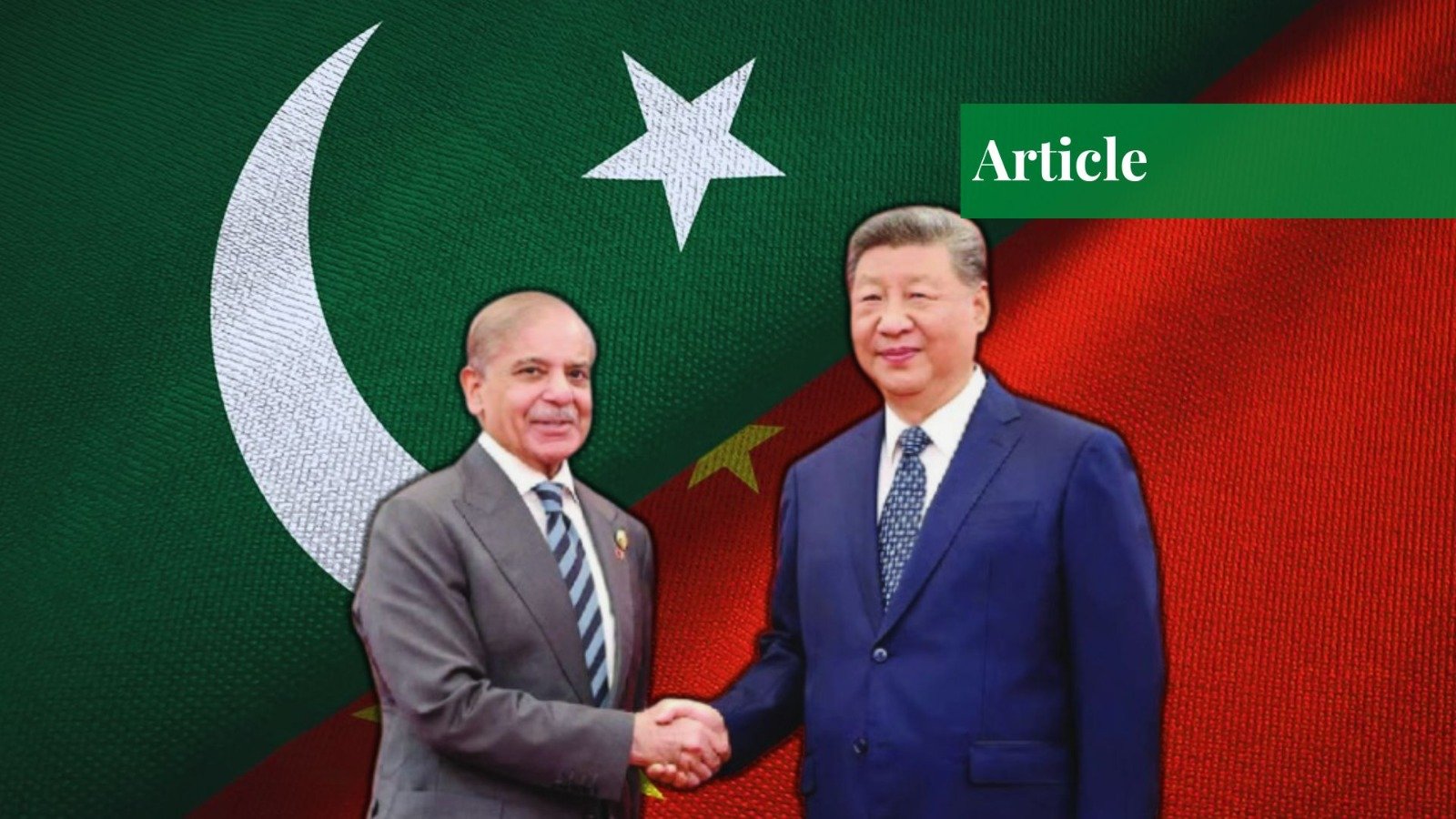Since the 1960s, the China-Pakistan relationship has often been described as “iron brother” and “all-weather strategic friendship,” reflecting their deep strategic trust and their decades-old cooperation in military, diplomatic, and economic domains. Despite their deep bonds, Pakistan’s experience with the CPEC has not been the way it should have been, illustrating that lofty promises do not always translate into smooth execution.
In the July summit of SCO, which took place in Astana, and the September Summit of SCO, which took place in Tianjin, both countries spoke about the launch of the China-Pakistan Action Plan 2025-29. The plan was presented as a road map for deepening their collaboration. Now it is yet to be seen whether this plan will be capable enough to move beyond the rhetoric to deliver visible progress on the ground in Pakistan’s economy, security, technology, and regional diplomacy.
Key Features of the Action Plan 2025–2029
The action plan has several priorities in domains such as the economy and security etc. The major focus is on the expansion of CPEC phase II, focusing on industrialization through Special Economic Zones (SEZs) and digital connectivity. The plan also highlights renewable energy, a step that could help Pakistan cut back on its costly dependence on imported fuel. Security remains part of the equation too, with promises of closer intelligence-sharing and joint counterterrorism work under the SCO banner.
What stands out, though, is the attempt to move beyond hard infrastructure. There is more space for ordinary people in this phase of cooperation through scholarships, skills-training programs, and efforts to encourage tourism. These softer connections suggest an effort to build ties that go deeper than just roads and power plants.
Finance is another area of change. Pakistan and China are increasingly turning to the yuan for trade, easing the strain of dollar shortages that have repeatedly pushed Pakistan’s economy to the edge.
Economic Dimension
Pakistan’s shaky economy is still the biggest roadblock to the China–Pakistan Action Plan 2025–2029. By mid-2025, external debt had swelled to $135 billion, while foreign reserves stood at just $14.51 billion, enough to meet only short-term needs. With the country tied to the IMF’s Extended Fund Facility, every major outlay must pass through the filter of strict fiscal discipline.
Chinese companies, once willing to pour in funds with little hesitation, are now wary after repeated repayment delays. Their focus has shifted to projects that promise reliable revenue streams. The new Action Plan points to Special Economic Zones (SEZs) and the $7 billion ML-1 railway upgrade as headline initiatives, but both depend on stable regulations, timely infrastructure support, and credible investor safeguards.
The problem is not a lack of ambition but the proper execution. As of now, Islamabad is trapped in the cycle of borrowing, rather than having real gains in trade and industry. There is a need for smoother procedures and a serious effort to cut red tape. Without taking these actions, deals worth billions would halt, and the vision risks staying on paper only.
Security Dimension
Security remains the weakest link in the China–Pakistan partnership. A suicide attack on the Dasu Hydropower project resulted in the death of five Chinese engineers in March 2024. Beijing, in response, pushed for stronger assurances. After two years, another blast incident took place in Karachi University, claiming the lives of three Chinese teachers. This shows that infrastructural and educational projects have become prime targets.
Islamabad has since stationed a Special Security Division of 15,000 personnel to guard CPEC projects, but repeated incidents continue to cast doubt on how much protection they can really provide. The new action plan places fresh emphasis on joint counterterrorism exercises under the SCO, which also brings in Central Asian states where many of the cross-border militant networks are rooted.
Afghanistan remains another critical variable. Any slide into instability risks spilling over into Pakistan, disrupting regional connectivity and feeding back into domestic insurgencies. For the Action Plan to carry weight, security measures will need to be seen not just in official statements, but in the consistent safety of people and projects on the ground.
Technology and Connectivity
The new Action Plan between Pakistan and China gives unusual weight to digital cooperation. Projects under the so-called Digital Silk Road are being fast-tracked, including the extension of the Pak–China fiber optic link from Khunjerab to Rawalpindi, and talks are underway to bring 5G to Pakistan with Huawei’s involvement.
For Pakistan, where internet access still misses about 15% of the population, this is no small step. A stronger digital backbone could lift everything from online education to mobile banking.
Better connectivity can lead to new businesses, jobs, and a broader place in the global digital economy. However, heavy reliance on Chinese technology could also be a concern for Pakistan. Letting another country control the data and decide the security level of the networks can create dependence. Unless Pakistan builds strong rules to protect its users and ensure transparency. If managed carefully, the digital drive could bring inclusive growth; if not, it could leave the country exposed and vulnerable.
Regional Diplomacy
During the SCO summit, the launch of the action plan shows that the cooperation between China and Pakistan is deeply intertwined in the regional frameworks. SCO, being a multilateral organization, aims to provide multilateral legitimacy to its members. Despite that, diplomatic challenges regarding rising India persist that causing friction within the organization. For instance, India resists references to China’s Belt and Road Initiative and seeks alternatives such as IMEC (India-Middle East-Europe Economic Corridor), International North-South Transport Corridor (INSTC), and Chabahar Port Development. For China, BRI vitality can be seen through progress in Pakistan, whereas Pakistan manages the partnership alongside ties with the United States, Gulf states, and international financial institutions. The action plan thus shapes not only bilateral relations but also situates both countries within a contested regional order.
Challenges in Translating Trust into Ground Realities
The China-Pakistan gap between political trust and the real outcomes. Pakistan, on its end, faces different issues related to governance, including corruption, bureaucratic inefficiency, and abrupt policy changes. Due to these issues, Pakistan has faced slowed implementation. Economic fragility, marked by debt burdens and limited foreign exchange reserves, limits Pakistan’s capacity to co-finance major projects.
In Pakistan, investors feel discouraged since security risks remain due to local resentment towards Chinese projects. This is often seen as benefiting elites, adding a layer of political sensitivity. On the other hand, China, being observant of these difficulties, has shifted its strategy from large loans to smaller, more targeted investments. Yet this caution also means that Pakistan must do more to create an environment where trust can materialize into sustainable outcomes.
Conclusion
To sum up, the China-Pakistan Action Plan 2025-29 has been designed to align political trust with practical outcomes. It is another attempt to take a realistic approach than the earlier phase of CPEC, in which industrialization, renewable energy, digital connectivity, and people-to-people ties are the core of the plan.
The success of the plan again depends on China’s commitments and more on Pakistan’s internal reforms. Pakistan can guarantee the success of the action plan by stabilizing its economy, guaranteeing security for foreign investors, and improving governance; otherwise, the plan risks becoming another set of promises with limited ground impact. To make the action plan a turning point, it is central to meet the conditions. Only then can the plan bring tangible benefits to Pakistan’s economy and society. Translating the high-level trust into ground realities requires joint responsibility, discipline in execution, and resilience against the challenges of a volatile region.
If you want to submit your articles and/or research papers, please visit the Submissions page.
To stay updated with the latest jobs, CSS news, internships, scholarships, and current affairs articles, join our Community Forum!
The views and opinions expressed in this article/paper are the author’s own and do not necessarily reflect the editorial position of Paradigm Shift.
Ramsha is currently pursuing Mphil in Strategic Studies at NDU. She is an early-career researcher focused on China's geopolitical role in South Asia and its Strategic Partnerships. She has also worked with several think tanks, such as TDI, Batieghar, ACRS, IPS etc.



